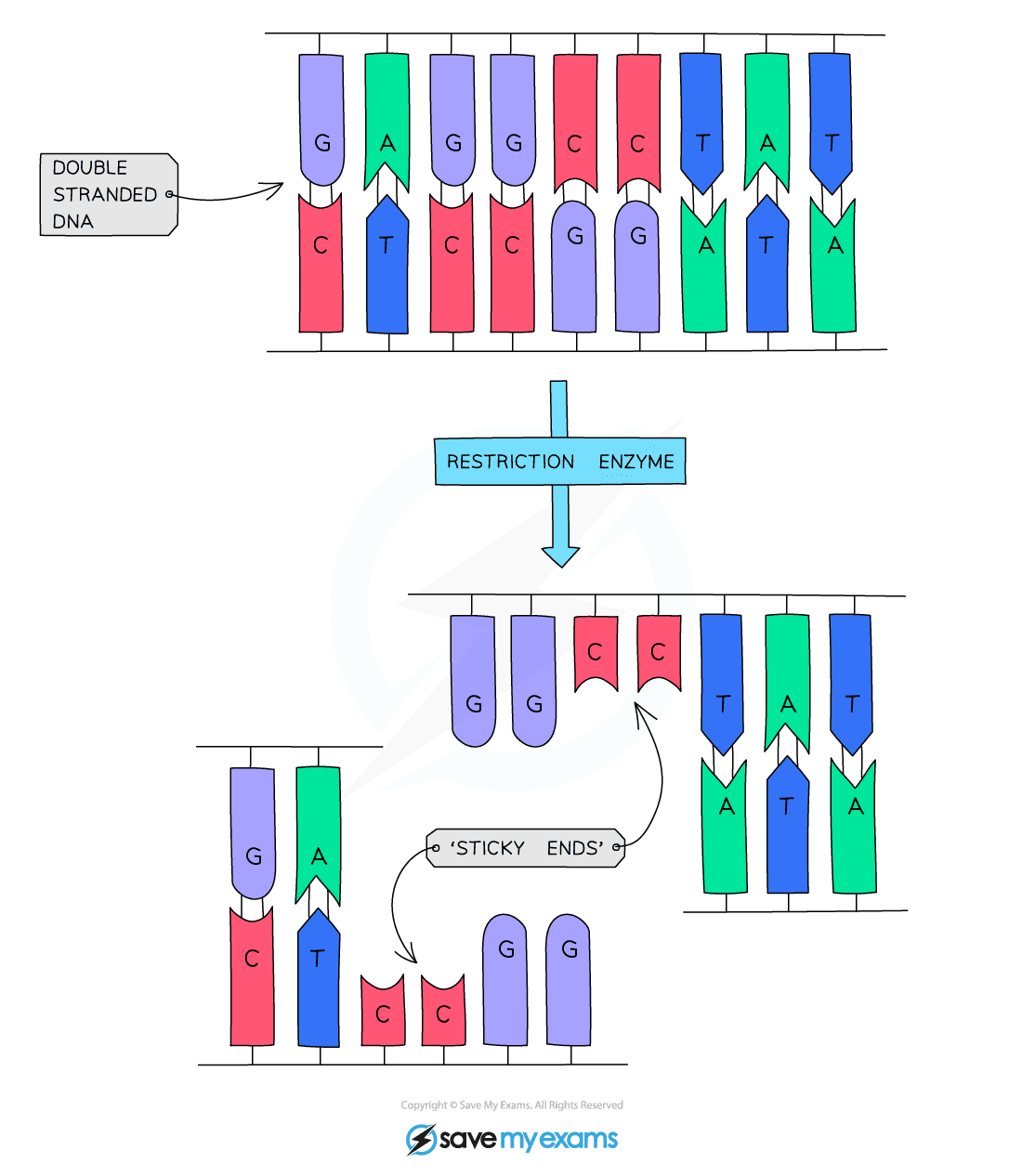The Process of Genetic Engineering
- The gene that is to be inserted is located in the original organism
- Restriction enzymes are used to isolate the required gene, leaving it with ‘sticky ends’ (a short section of unpaired bases)
- A bacterial plasmid is cut by the same restriction enzyme leaving it with corresponding sticky ends (plasmids are circles of DNA found inside bacterial cells)
Restriction enzymes cut DNA strands at specific sequences to form ‘sticky ends’
- The plasmid and the isolated gene are joined together by DNA ligase enzyme
- If two pieces of DNA have matching sticky ends (because they have been cut by the same restriction enzyme), DNA ligase will link them to form a single, unbroken molecule of DNA
DNA ligase is used to join two separate pieces of DNA together
- The genetically engineered plasmid is inserted into a bacterial cell
- When the bacteria reproduce the plasmids are copied as well and so a recombinant plasmid can quickly be spread as the bacteria multiply and they will then all express the gene and make the human protein
- The genetically engineered bacteria can be placed in a fermenter to reproduce quickly in controlled conditions and make large quantities of the human protein



